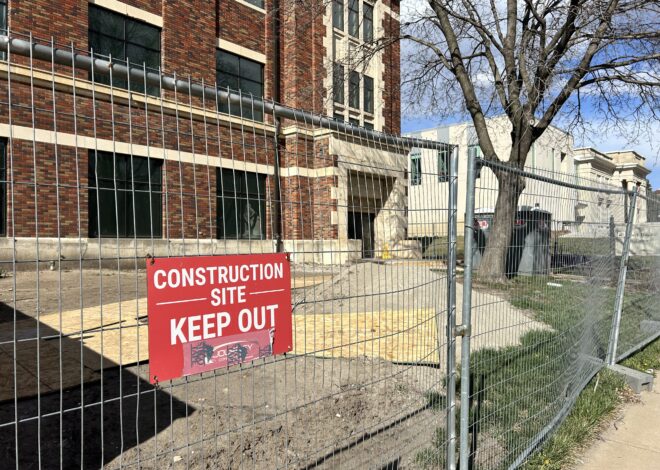
Drug arrests up in S.D., Vermillion sees gradual increase
South Dakota’s total number of drug and narcotics arrests reached a 10-year high last year, with more than 7,900 occurring throughout the state.
This was a 13 percent increase from 2015, according to the crime in South Dakota report, which was released by the attorney general last month.
This spike in drug violations is due to an increased use of meth, heroin and opioids within the state. These drugs have become cheaper or more accessible in some cases, Matt Betzen, Vermillion Police Department chief, said.
Betzen said a majority of the cheaper drugs are coming from the southern U.S. border.
“Drugs come in and work their way to multiple drug dealers on the streets,” he said.
Austin Thompson, a sophomore criminal justice major and volunteer for the Watertown Police Department, said marijuana was the main drug coming across the southern border for years, but now that it’s legal in several states, drug cartels are losing money. Because of this, cartels have switched to heroin, meth and opioids.
“Basically what’s happened is marijuana has been legalized in several states in the United States so their profits have gone down,” Thompson said. “So now they’ve started to traffic opioids such as heroin and fentanyl and in addition to methamphetamine to supplement that marijuana that hasn’t been able to sell.”
Betzen said though many larger South Dakota communities are really feeling the jump in drug use and subsequent drug arrests, Vermillion has only experienced slight increases in drug-related incidents.
According to the 2016 annual report released by VPD, the total number of drug violations in the community was 119 last year, the highest it’s been in the last three years.
The report also shows an increase in the number of drug equipment arrests in the last few years. In 2016 the total number of drug equipment arrests in Vermillion was 53, more than double the number in 2013.
The statistics show this spike in arrests hasn’t translated to USD’s campus. USD’s Annual Fire Safety and Security Report shows that drug arrests on campus were stable in 2015, with 19 that year and in 2014.
Brian Paulsen, the Yankton Police Department chief, said law enforcement agencies across South Dakota are making a combined effort to combat the rising drug problems in the state.
“We all have the single goal in mind to see our drugs drop,” Paulsen said. “As long as Vermillion and Yankton and Wagner and Mitchell and every other community with law enforcement is working on that goal, eventually I think we can get it so that we start seeing that drop in drug arrests or drug contacts.”
One method the Vermillion and Yankton departments employ is a drug collection box, where expired or unused drugs can be safely disposed of.
Paulsen said several police departments across the state, including Yankton’s, are training their police officers so they’re better equipped for educating others about the dangers of addiction.
“We’re trying to educate our folks and then go out and educate our citizens,” Paulsen said.
This increase in drug use and arrests isn’t only being fought by police officers, but also by South Dakota lawmakers. In 2013 the Public Safety Improvement Act was signed in hopes of helping the drug problem go down in South Dakota. The main focus of the bill was to rehabilitate drug offenders instead of sending them to jail, though the program does have its detractors, Thompson said.
“I think it has good intentions, instead of incarcerating drug offenders which doesn’t do a lot of good they want to put them on probation and keep them in the community,” Thompson said. “The problem with that is we’re not starting programs like drug courts and rehabilitation efforts within those communities, they’re just going to continue their cycle of addiction.”



